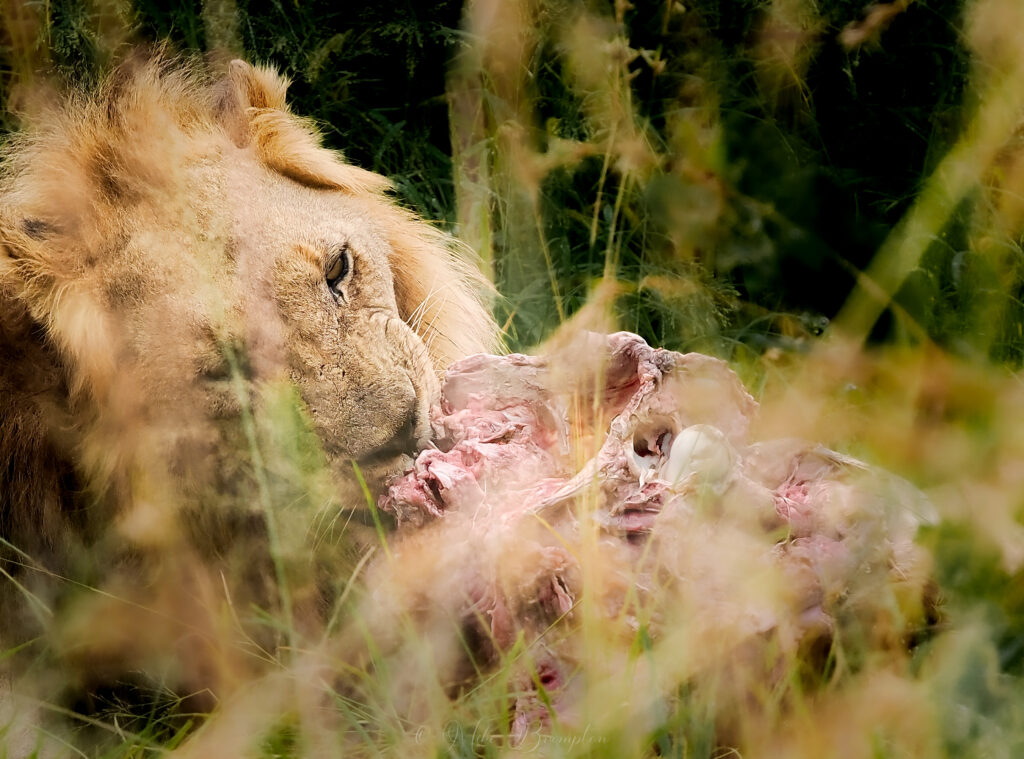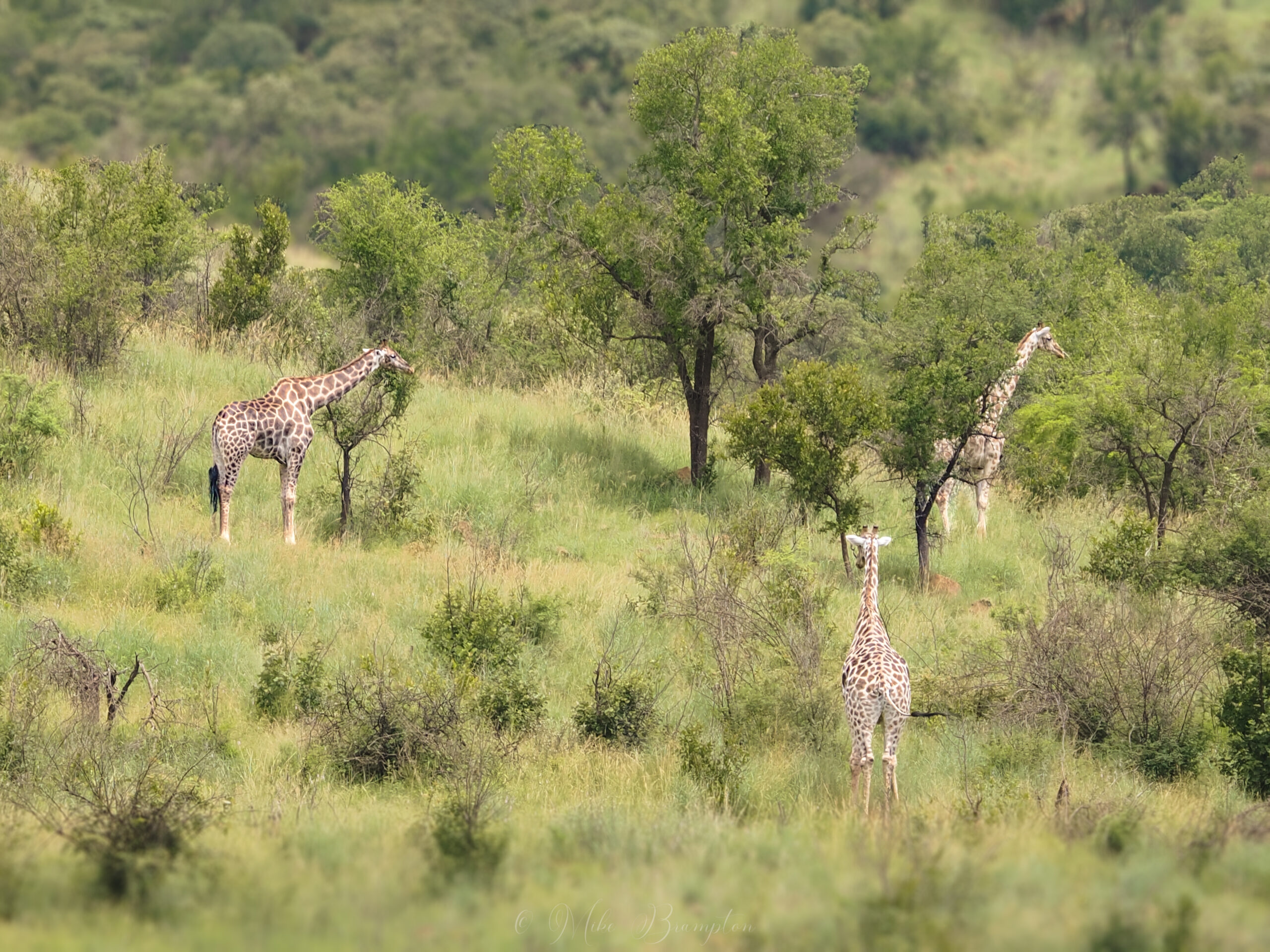This story has stayed with me, not just for what I witnessed, but for what was lost in the silence between frames.
This is the story of a family of giraffes, a lion pride, and a wrong turn that changed everything.
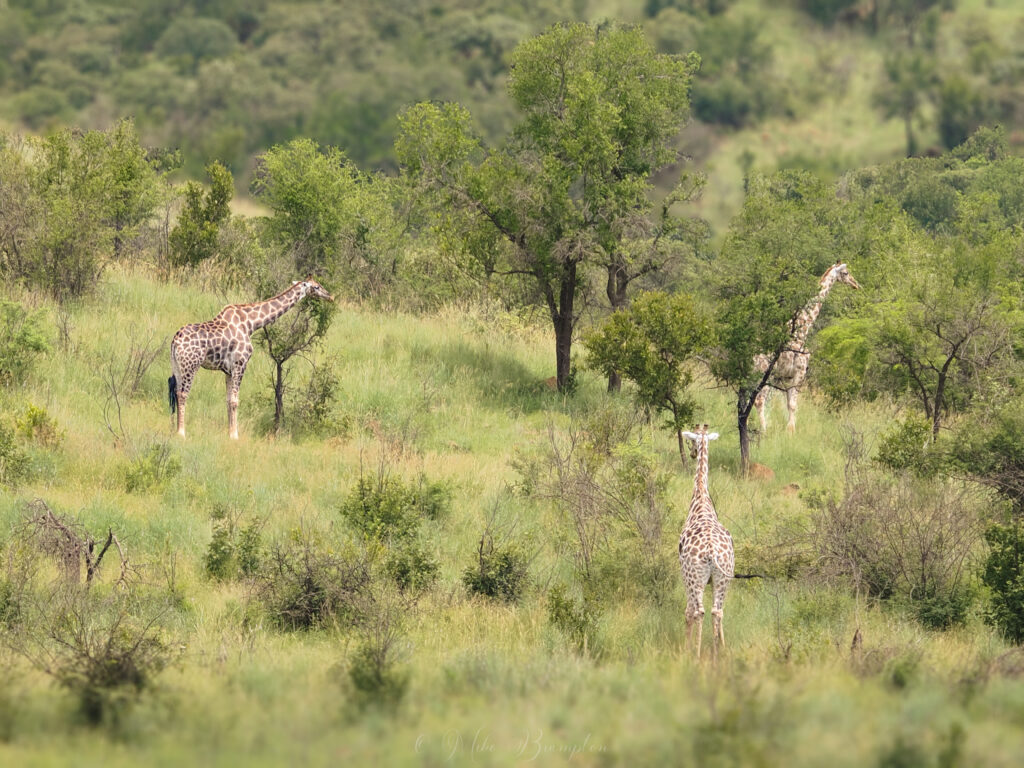
It began at dusk. The air was cooling, the light settling into that golden-pink hue that softens everything—except instinct. We were parked near the valley’s edge, scanning the treeline, when movement caught our eye.
A giraffe family emerged from the brush, moving cautiously across the plain. Seven of them: three calves, two juveniles, and two adults. One of the adults—a female—was limping badly. She kept falling behind. Every few minutes, the group would pause, looking back, waiting for her to catch up before pressing forward.
I remember thinking how exposed they looked, out there in the open. Vulnerable, slow.
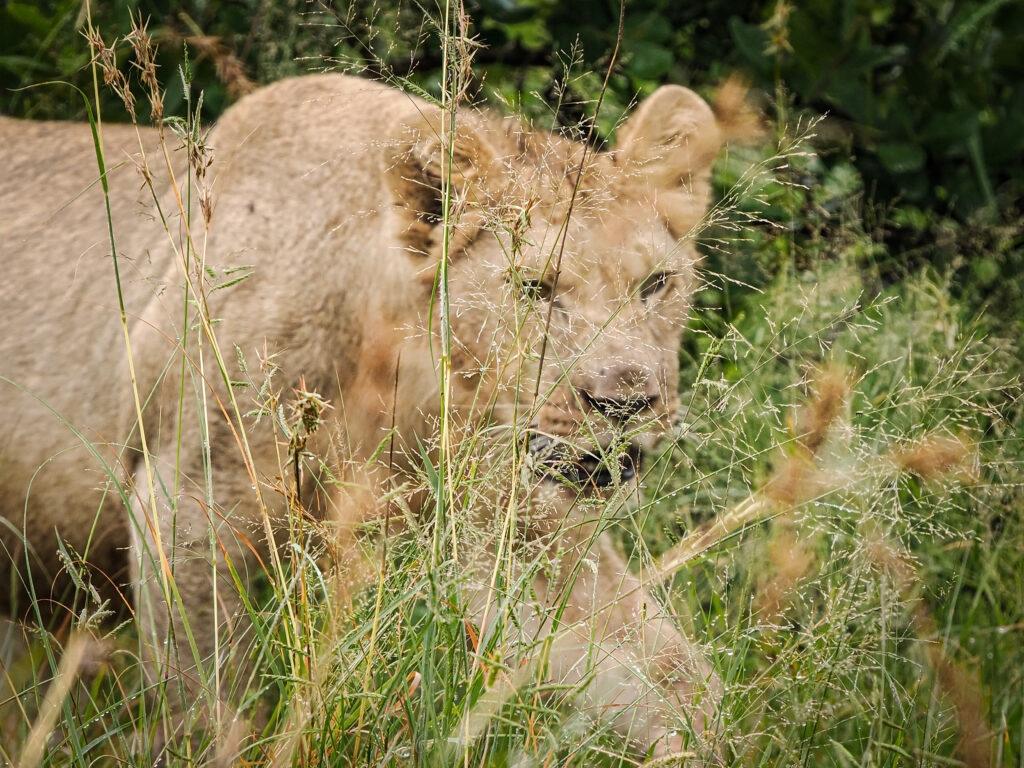
Just hours earlier, we had tracked the Mankwe Lion Pride—two dominant males, four lionesses, and three cubs—just north of Fish Eagle Overlook. We’d lost them in thick bush, but they were close. Too close.
As the giraffes moved deeper into the valley, a quiet anxiety built in the vehicle. The lake shimmered in the distance—a place of relative safety. But the path to it forked. One route led toward water. The other veered near the ridge—right past where we’d last seen the lions.
“They need to turn,” someone murmured.
But they didn’t.
They were headed the wrong way.
That night, we slept uneasy.
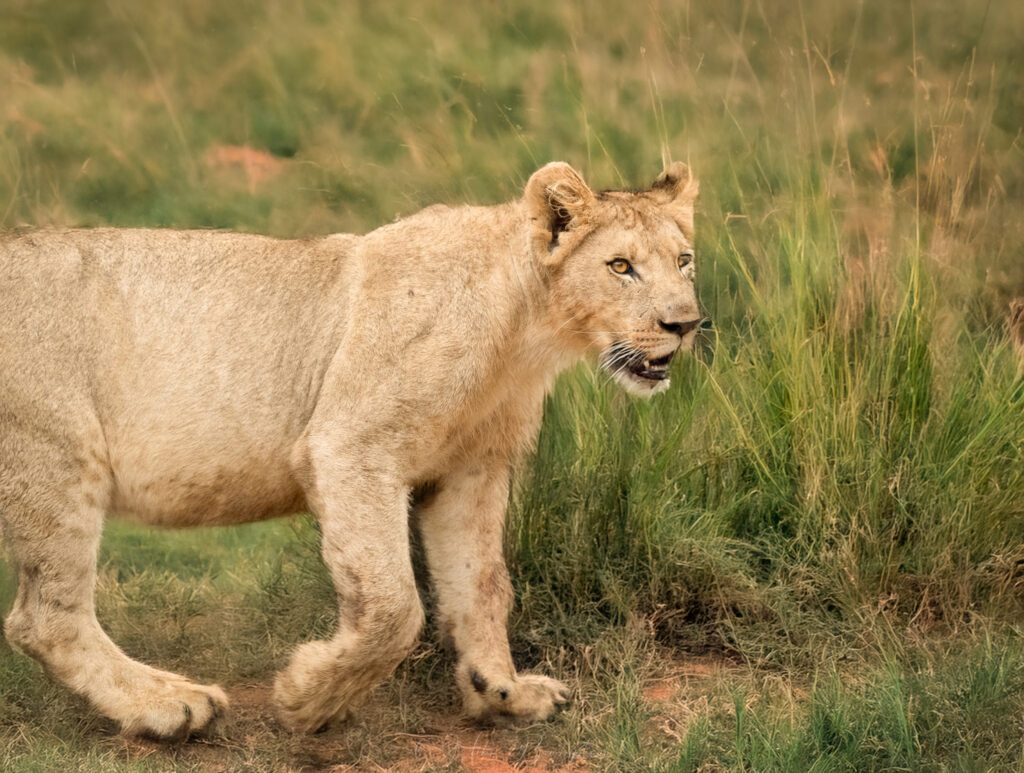
The Aftermath
Morning broke with a strange stillness. There’s often a hush after a kill. The air holds it.
Whispers filtered through the radio: “Lion kill. Near Fish Eagle.”
We drove out immediately. And there they were—two male lions and two lionesses, their faces bloodied, their bellies heavy. They crouched over a giraffe carcass, half-submerged in the long grass, the gruesome details partially obscured from prying eyes.
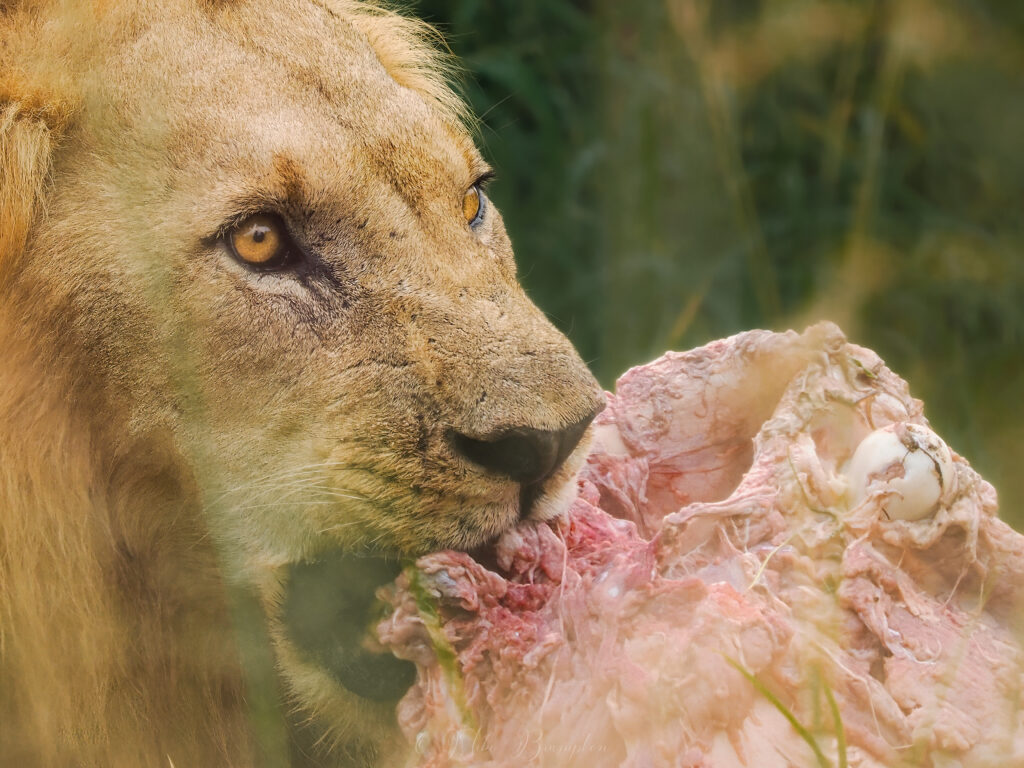
But we were missing something.
Where were the other two lionesses? The cubs?
And more importantly—where were the rest of the giraffes?
Later that day, we saw them. A lone adult and two juveniles, standing at a distance in an open patch of veld. They weren’t grazing. They weren’t moving. They were staring—back toward the overlook.
They stayed there for hours.
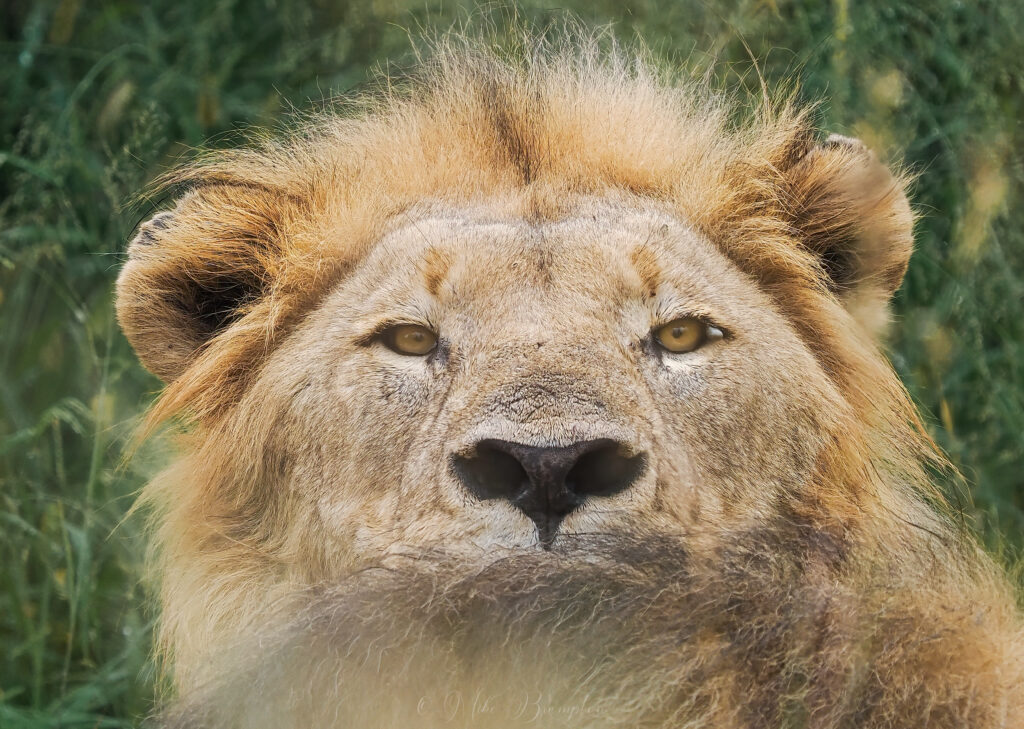
There was something deeply human in their lingering. A refusal to accept what instinct must have already known. They kept returning to the edge of the ridge, as if memory itself were magnetic.
Photographing them felt like eavesdropping on grief.
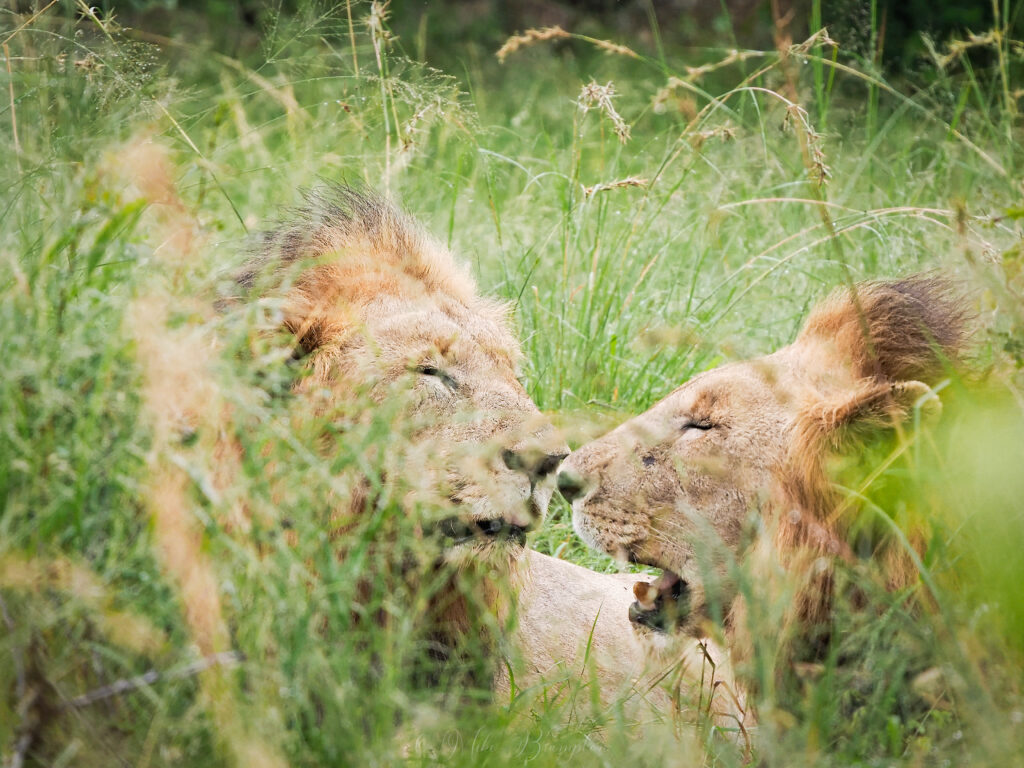
The Silent Witness
As a photographer, you spend years learning when to shoot and when to sit still. This was the latter.
I took a few frames from a respectful distance. But mostly, I just watched.
Nature is awe-inspiring. But she offers no mercy.
